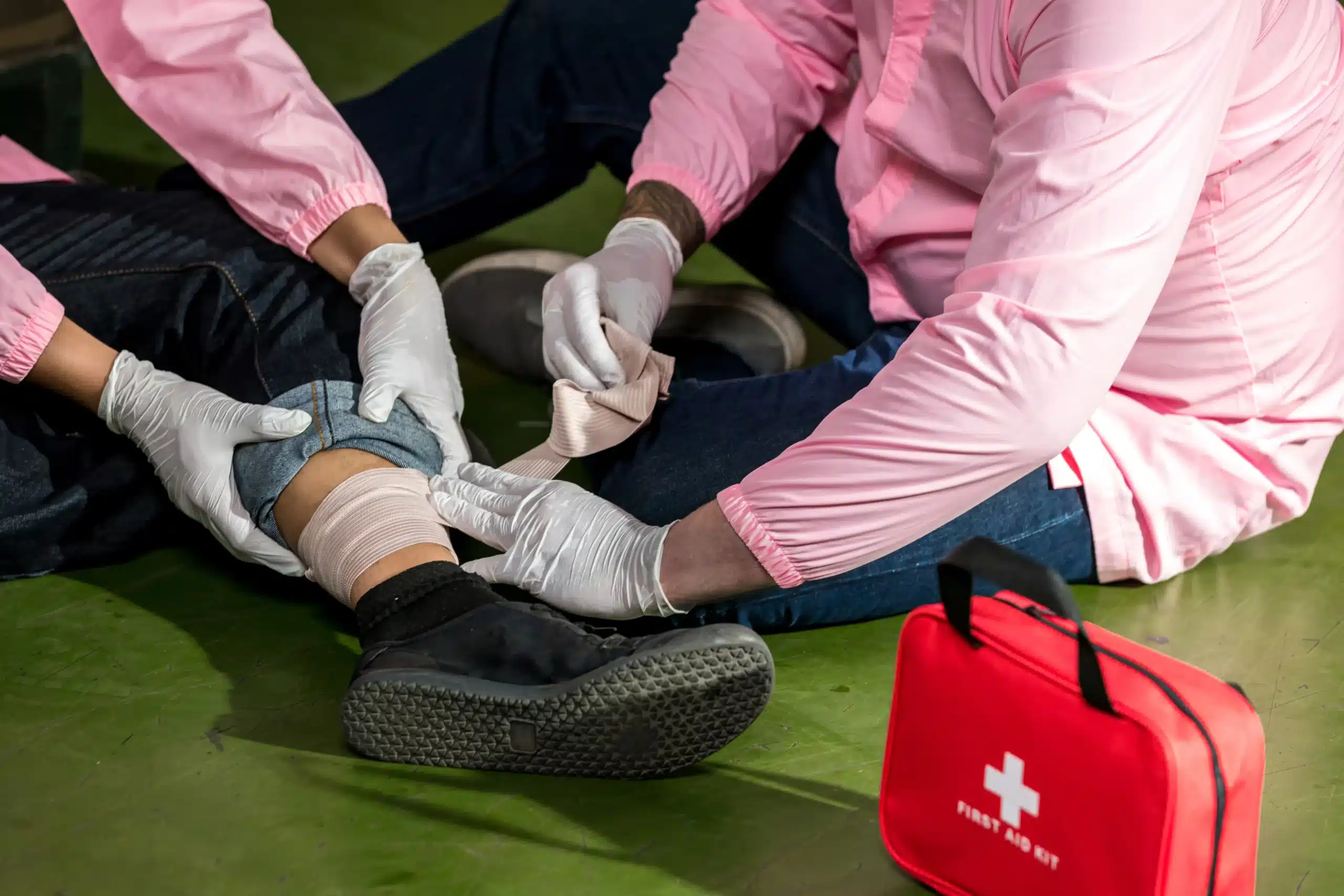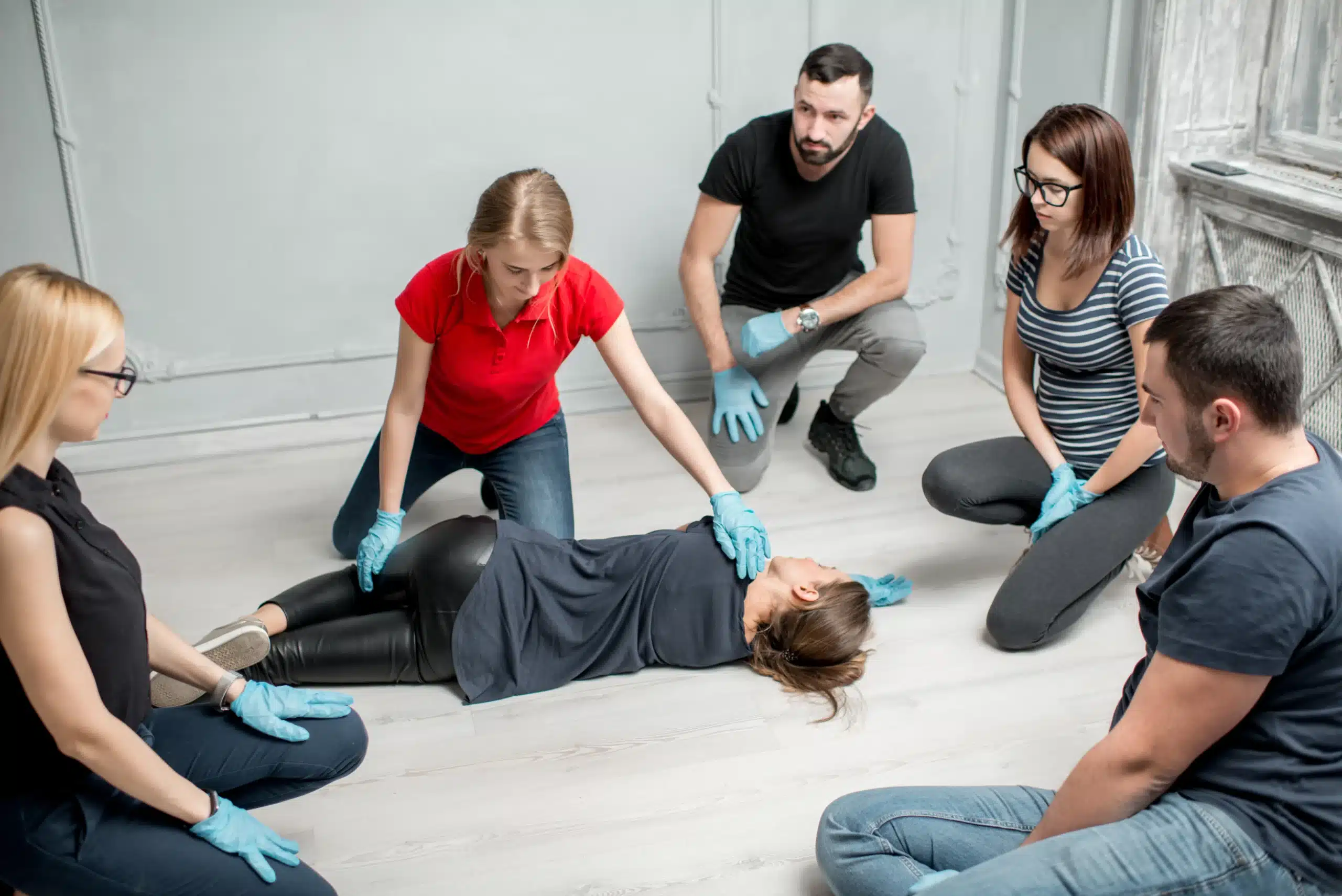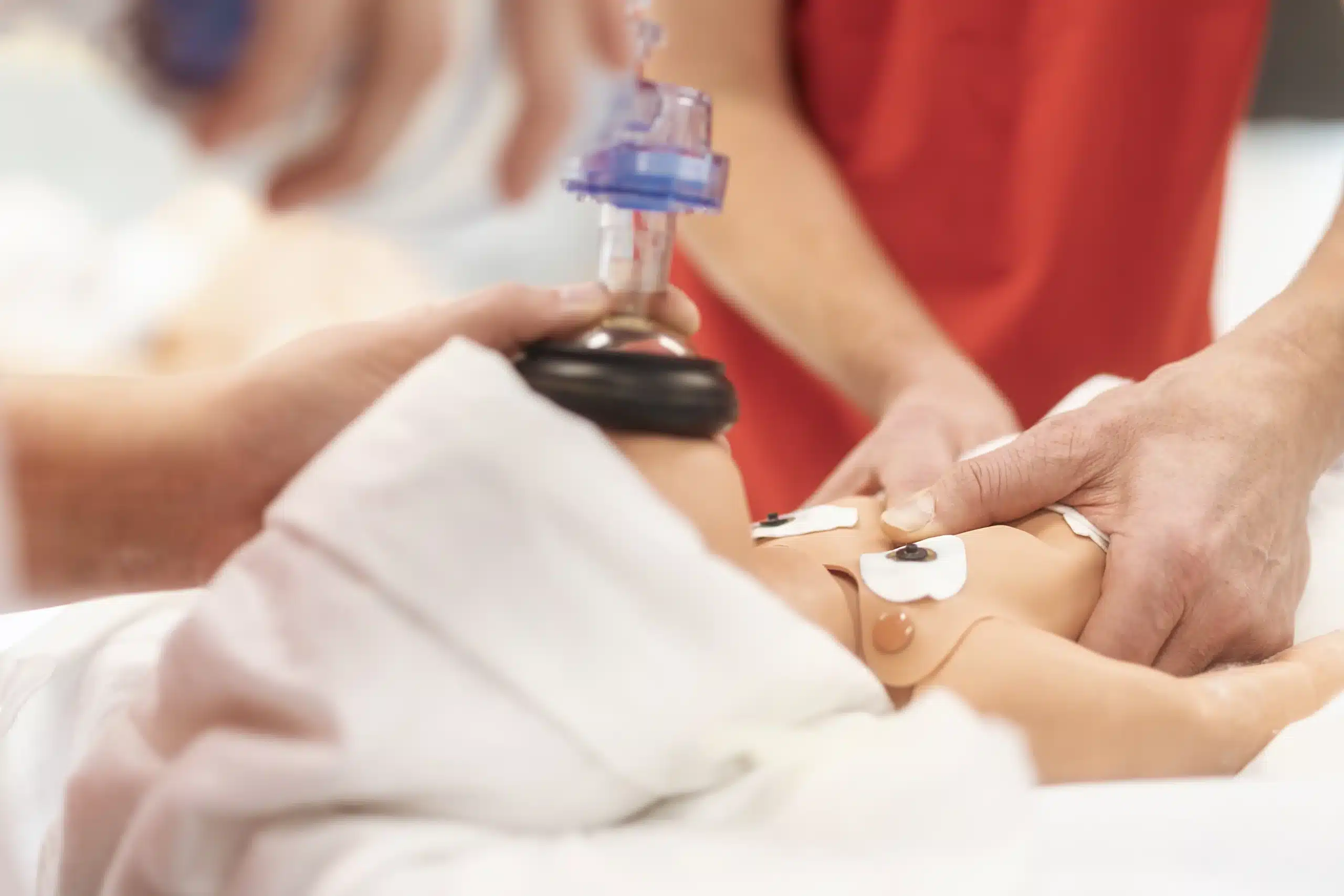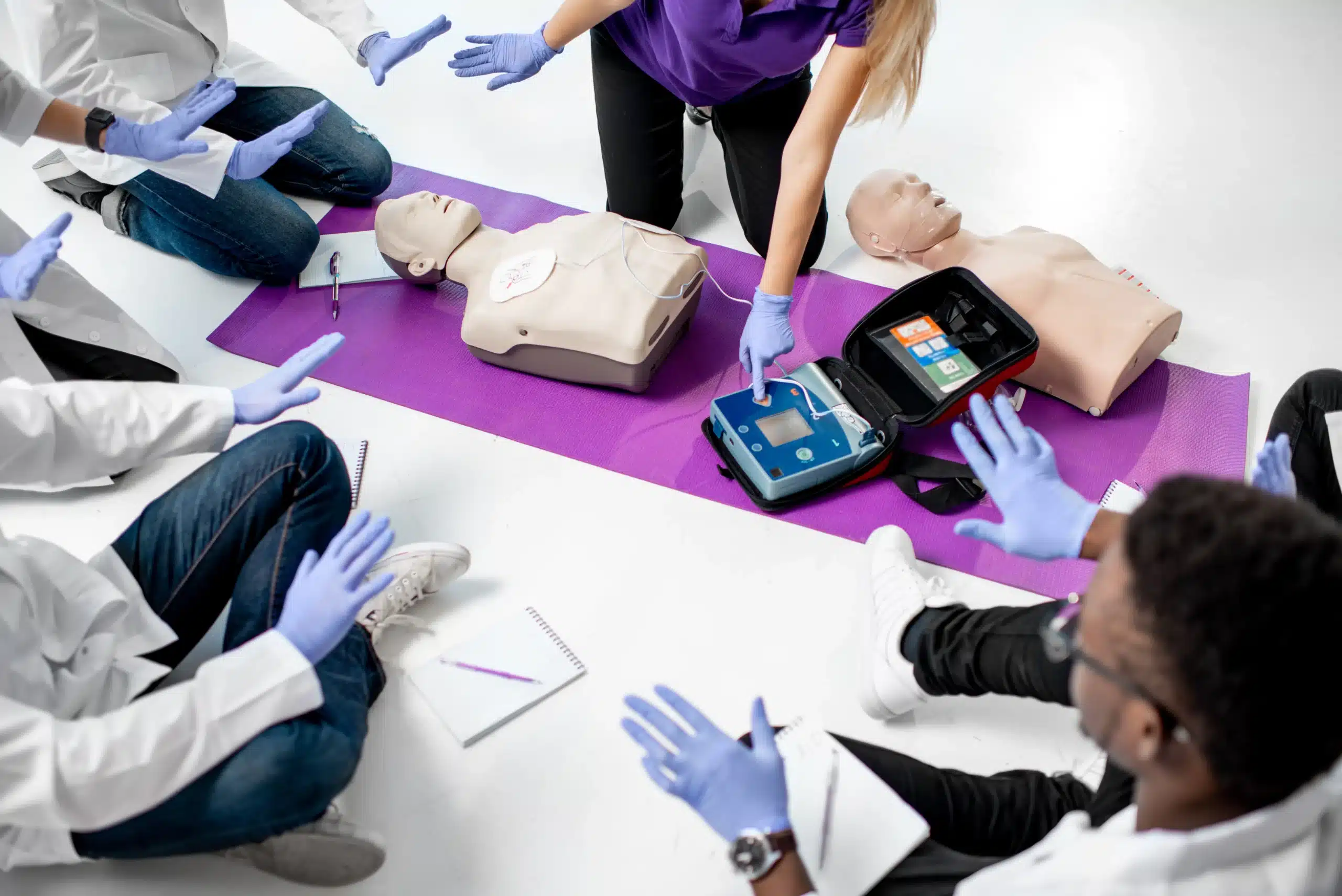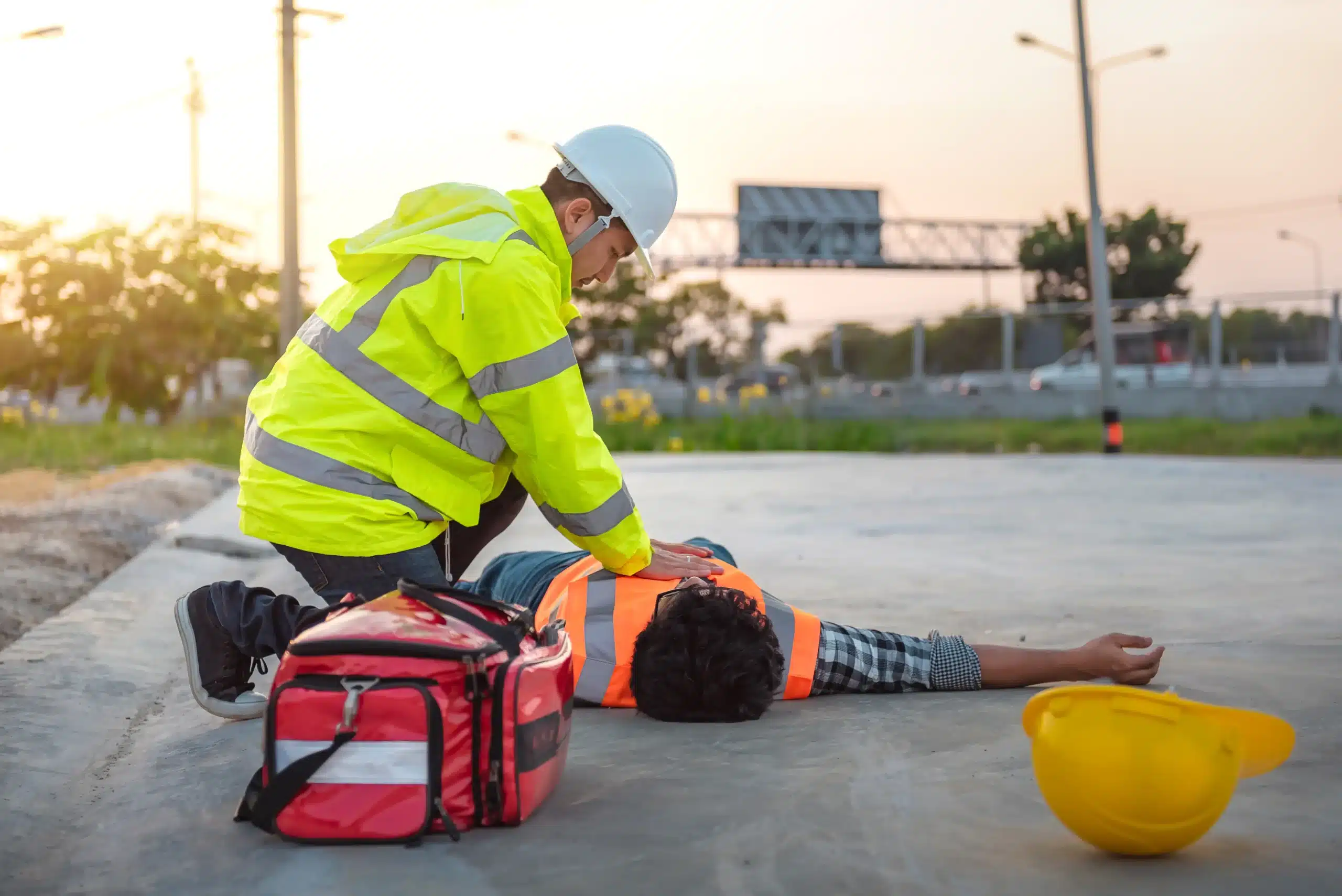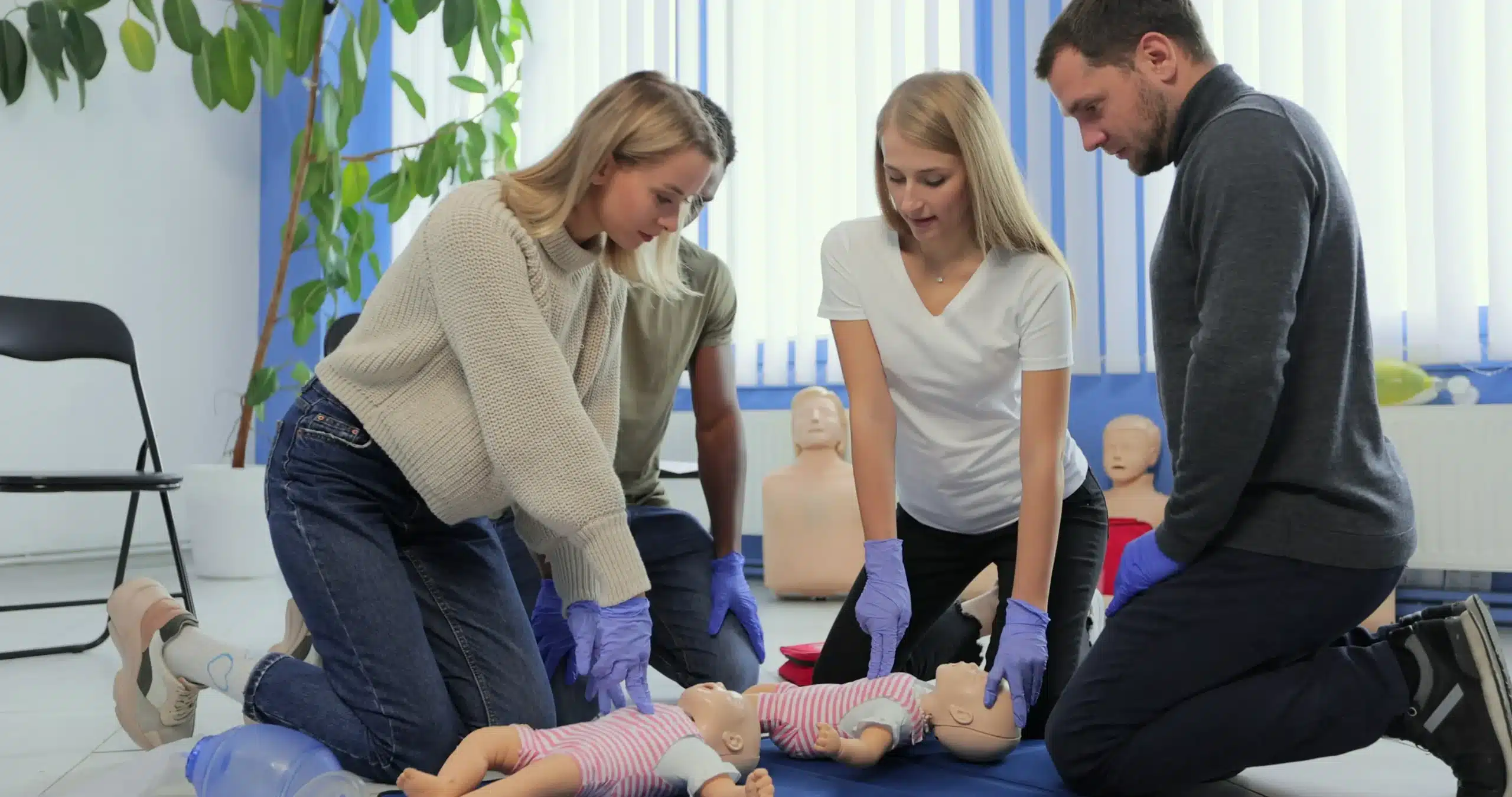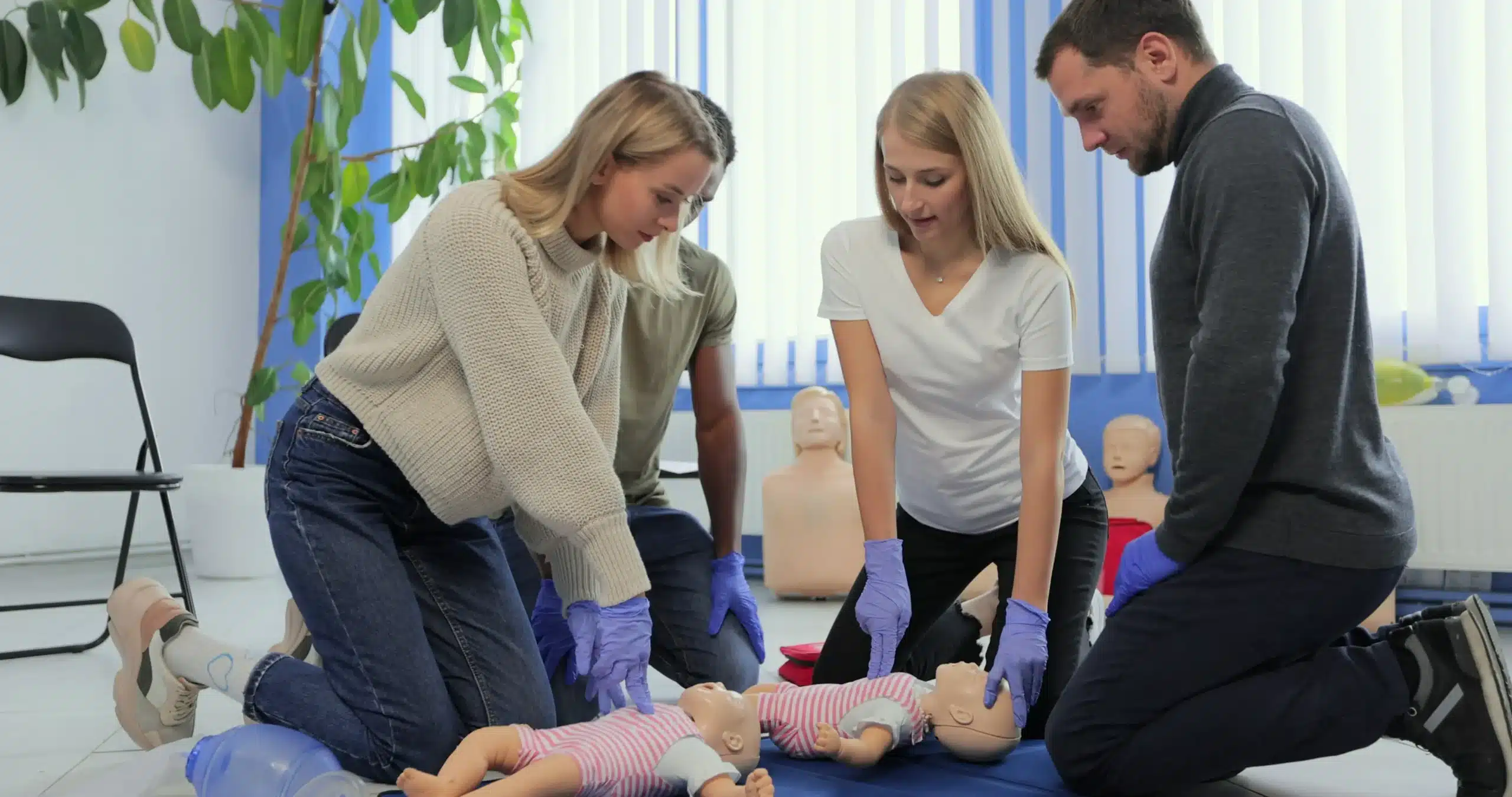Emergencies can happen anytime, anywhere. Would you know what to do if someone near you suddenly collapsed? Learning CPR can equip you with the skills and confidence to respond effectively in such critical situations. This comprehensive guide covers the essentials of CPR training, including what CPR is, where to find CPR classes in Oakland (and even CPR classes San Francisco if you’re in that area), and how to choose the right certification level for your needs. We’ll also discuss costs, training providers, and tips for getting the most out of your CPR class. Let’s get started.
Key Takeaways
- CPR knowledge saves lives: Equipping yourself with CPR training can make a profound difference in emergency situations, potentially doubling or tripling a person’s survival rate. It’s a skill within everyone’s reach.
- Choosing the right CPR training is key: Many providers offer various CPR certifications and class formats, allowing you to find the perfect fit for your schedule, learning style, and individual requirements.
- Preparation maximizes your CPR training: Set yourself up for success by understanding the process, dressing comfortably, actively participating, and asking questions. Regularly refresh your skills to stay prepared and confident.
What is CPR and Why is it Important?
Learning CPR is a vital step in being prepared for emergencies. This section clarifies what CPR is and addresses common misconceptions surrounding this life-saving technique. Understanding these facts empowers you to act confidently and effectively in critical situations.
What is CPR?
CPR (Cardiopulmonary Resuscitation) is a life-saving technique used when someone’s heart stops beating. It involves chest compressions and rescue breaths to help circulate oxygenated blood to the brain and other vital organs. Learning CPR equips you to respond effectively during emergencies like heart attacks, near-drowning incidents, or choking. Effective bystander CPR can double or even triple a person’s chances of survival. So, whether you’re a parent, caregiver, or simply a concerned community member, knowing CPR can make a real difference.
Common CPR Misconceptions
Several myths surround CPR that can hinder people from taking action. One common misconception is that only healthcare professionals can perform CPR. This isn’t true. CPR training is available and accessible to everyone, empowering anyone to provide immediate care until professional help arrives. Another myth is that CPR alone can restart a stopped heart. While CPR helps maintain blood flow, it’s often the combined efforts of CPR, defibrillation (using an AED), and advanced medical care that restore a normal heart rhythm. It’s also a misconception that CPR should only be performed until the person revives. Current guidelines recommend continuing CPR until medical professionals arrive. By dispelling these myths and understanding the true nature of CPR, you’ll be better prepared to act quickly and confidently in a crisis.
Top CPR Training Providers in Oakland
Finding the right CPR training can feel overwhelming, but several excellent providers serve the Oakland area. Here’s a rundown of some popular options to help you in your search.
Safety Training Seminars
Safety Training Seminars offers a comprehensive range of American Heart Association (AHA) certification courses, including BLS, ACLS, PALS, and NRP. They also provide EMSA Child Care Health & Safety courses and offer discounts for groups. A commitment to clear, simple instruction helps students feel confident using their skills. Plus, their convenient Oakland location serves Alameda and Berkeley, too. Check out their low price guarantee.
American Red Cross
The American Red Cross is a well-known provider of CPR and First Aid training. They offer classes throughout California, including the Bay Area. These courses are designed to equip you with essential lifesaving skills, taught by trained professionals. While their San Francisco location might be the closest option for some Oakland residents, it’s worth checking their website for class availability and locations.
Revive CPR
Revive CPR, based in San Francisco, offers AHA-certified CPR, BLS, and First Aid classes. A key benefit of training with Revive CPR is receiving your AHA certification on the same day as your class. Their San Francisco location may be a convenient option for those in the East Bay.
San Francisco Fire Department
While the San Francisco Fire Department doesn’t directly offer CPR training to the public, they recommend contacting the American Red Cross or the American Heart Association for certified training. This reinforces the importance of seeking training from established and reputable organizations.
Local Community Colleges
Many local community colleges offer CPR and First Aid training, often as part of their health and safety or continuing education programs. Check with colleges in your area, such as Laney College, Merritt College, or Berkeley City College, for specific course offerings and schedules. Community colleges can be a great resource for affordable and accessible training.
CPR Class Types and Certifications
Knowing which CPR class is right for you depends on your individual needs. From the basics to advanced life support training, there’s a certification level for everyone. Here’s a breakdown of common CPR class types and certifications:
Adult, Child, and Infant CPR
This course covers the fundamentals of CPR for different age groups. You’ll learn how to perform chest compressions, rescue breaths, and clear obstructed airways for adults, children, and infants. Some courses, like the Family & Friends CPR course from the American Heart Association, also teach how to use an automated external defibrillator (AED). This class is a great option for anyone who wants to learn basic lifesaving skills, including parents, teachers, and community members.
Basic Life Support (BLS) for Healthcare Providers
BLS certification is essential for healthcare professionals like doctors, nurses, and paramedics. This training goes beyond basic CPR, covering advanced techniques such as using a bag-valve mask for ventilation and relieving choking. BLS certification also includes training on how to work effectively as part of a resuscitation team. Safety Training Seminars offers American Heart Association BLS certification in Oakland and other locations. You’ll practice more advanced skills and learn how to respond to various life-threatening situations.
First Aid and AED Training
Many CPR courses also include training in first aid and AED use. First aid training covers how to respond to common medical emergencies like cuts, burns, and allergic reactions. AED training teaches you how to use an AED to deliver a shock to someone experiencing sudden cardiac arrest. The American Red Cross offers combined CPR and first aid classes throughout California. Learning both CPR and first aid can give you the confidence to handle a wider range of emergencies.
In-Person, Online, and Blended Learning
CPR classes are available in various formats to fit your schedule and learning style. In-person classes provide hands-on training with a certified instructor. Online courses offer flexibility and convenience, allowing you to learn the material at your own pace. Blended learning combines online coursework with an in-person skills session, offering a balance of flexibility and practical experience. Revive CPR is one example of a provider that offers blended learning CPR courses. The Red Cross also offers a variety of learning formats. Consider which learning style works best for you when choosing a CPR class.
CPR Class Costs and Value in Oakland
Knowing the price range for CPR classes helps you budget for your training. Let’s break down the costs associated with CPR certification in Oakland and explore ways to find the best value.
Average Pricing and What You Get
CPR class costs in Oakland vary based on several factors. The type of certification (adult-only CPR versus a comprehensive course covering adults, children, and infants) influences both cost and length. Location matters too. In-person classes are typically more expensive. For example, an in-person Adult CPR/AED class with the American Red Cross averages around $55, while online-only options can be as low as $37. Healthcare providers often require in-person training for certifications like BLS, so factor that into your decision. Safety Training Seminars offers a low price guarantee on all our courses.
Group Rates and Special Offers
If you’re training with a group, look for discounts. Many providers, including Safety Training Seminars, offer discounted rates for group classes—sometimes up to 30% off. This is a great option for workplaces, community groups, or friends.
Free and Low-Cost Community Resources
While getting certified usually involves a fee, Oakland has valuable free and low-cost resources. The Neighborhood Emergency Response Team (NERT) program sometimes offers free CPR and First Aid training as part of its disaster preparedness courses. This is a great way to learn the basics. For official CPR/First Aid certification for your job, contact organizations like the American Red Cross or the American Heart Association, which sometimes offer community training events at reduced rates.
Get CPR Certified: The Process
Getting CPR certified is straightforward, involving instruction and hands-on practice. This section walks you through the process, from training to maintaining your certification.
What Happens During CPR Training?
CPR training blends theory and practice. You’ll learn CPR basics, including chest compressions, rescue breaths (for some certifications), and AED use. Many courses, like the American Heart Association’s Family & Friends CPR Course, cover adult, child, and infant CPR. Some, like the American Red Cross Adult and Pediatric First Aid/CPR/AED course, include first aid training. You’ll practice on mannequins, applying your knowledge in a simulated setting with instructor guidance and feedback.
Get and Keep Your Certification
After completing training, you’ll receive certification, often a digital certificate valid for two years, like the American Red Cross Adult and Pediatric First Aid/CPR/AED certification. Staying sharp is important. The Red Cross offers resources and encourages refresher courses to maintain proficiency. Regular review and practice will keep you prepared.
Recertification Requirements
As your certification nears expiration (within 30 days or at two years), you’ll need a recertification course. These are shorter than initial training, focusing on essential skills and guideline updates. Organizations like the American Red Cross and American Heart Association offer renewal courses. The SF Fire website is another helpful resource for finding local recertification courses.
Prepare for Your CPR Training
Getting ready for your CPR class isn’t complicated, but a little preparation goes a long way. Knowing what to expect and how to approach the training can make a big difference in how much you get out of it.
What to Bring
CPR training is a hands-on learning experience. Comfortable clothing is key—you’ll be moving around and practicing on mannequins. Bring a notebook and pen to jot down important notes and reminders. While most training centers provide the necessary equipment, it’s always a good idea to check with your chosen provider beforehand. For example, you can review what to expect in a CPR class at Safety Training Seminars. Having water on hand is also a smart move, especially for longer training sessions.
Learn CPR Effectively: Tips
To really absorb the information, engage actively during the class. Ask questions, participate in discussions, and take advantage of the hands-on practice. Using a training mannequin is crucial for learning the correct hand placement and pressure for effective chest compressions, as described by Emergency First Response. Don’t be afraid to make mistakes—it’s all part of the learning process. A good instructor will provide constructive feedback and help you refine your technique. Choosing a quality training program will ensure you learn to perform CPR safely and effectively. You can learn more about CPR training and why it’s so important.
Use CPR Skills in Real Life
While you hope never to use your CPR skills in a real emergency, being prepared can make all the difference. Effective bystander CPR can significantly improve survival rates, especially in cases of cardiac arrest. Remember, your training empowers you to provide immediate, life-saving care until professional help arrives. CPR training is accessible to everyone and empowers individuals to help in emergencies, according to MyCPR NOW. Stay up-to-date with your certification and consider periodic refresher courses to keep your skills sharp. Knowing you’re prepared can give you confidence and peace of mind.
Related Articles
- Why CPR is Important in Healthcare – Oakland CPR Classes
- CPR Myths Exposed: Truth Behind Common Misconceptions
- CPR Courses in Oakland: Your Complete Guide – Oakland CPR Classes
- Find CPR Classes Near Me: A Complete Guide – Oakland CPR Classes
- CPR Training in Oakland: Your Complete Guide – Oakland CPR Classes
Frequently Asked Questions
What if I’m nervous about performing CPR in a real emergency? It’s completely normal to feel apprehensive about using CPR in a real-life situation. Remember, any attempt at CPR is better than none. Focus on what you learned in your training, and trust your skills. Regularly reviewing the material and practicing can also boost your confidence.
How do I choose the right CPR class for me? Consider your specific needs and schedule. If you’re a healthcare provider, you’ll need a BLS certification. If you’re a parent or caregiver, an adult, child, and infant CPR class might be suitable. Think about whether an in-person, online, or blended learning format works best for your learning style and availability.
Is online CPR certification enough, or do I need an in-person class? While online CPR courses offer flexibility, most certifications require an in-person skills assessment. Blended learning options combine online coursework with an in-person skills session, providing a good balance. Check with your employer or certifying organization for their specific requirements.
How often do I need to renew my CPR certification? CPR certifications are typically valid for two years. Recertification courses are available and often shorter than the initial training. Staying current with your certification ensures you’re up-to-date on the latest guidelines and techniques.
What if I can’t afford the cost of a CPR class? Explore free or low-cost options in your community. Organizations like the American Red Cross and local fire departments sometimes offer discounted or free CPR training events. Community colleges may also have affordable programs. Inquire with local organizations to find resources that fit your budget.


